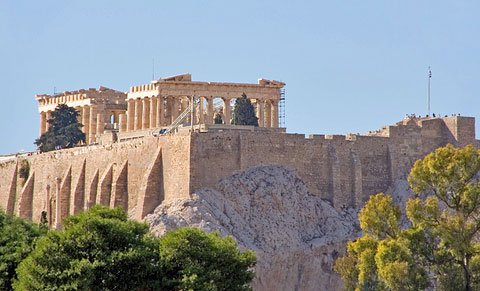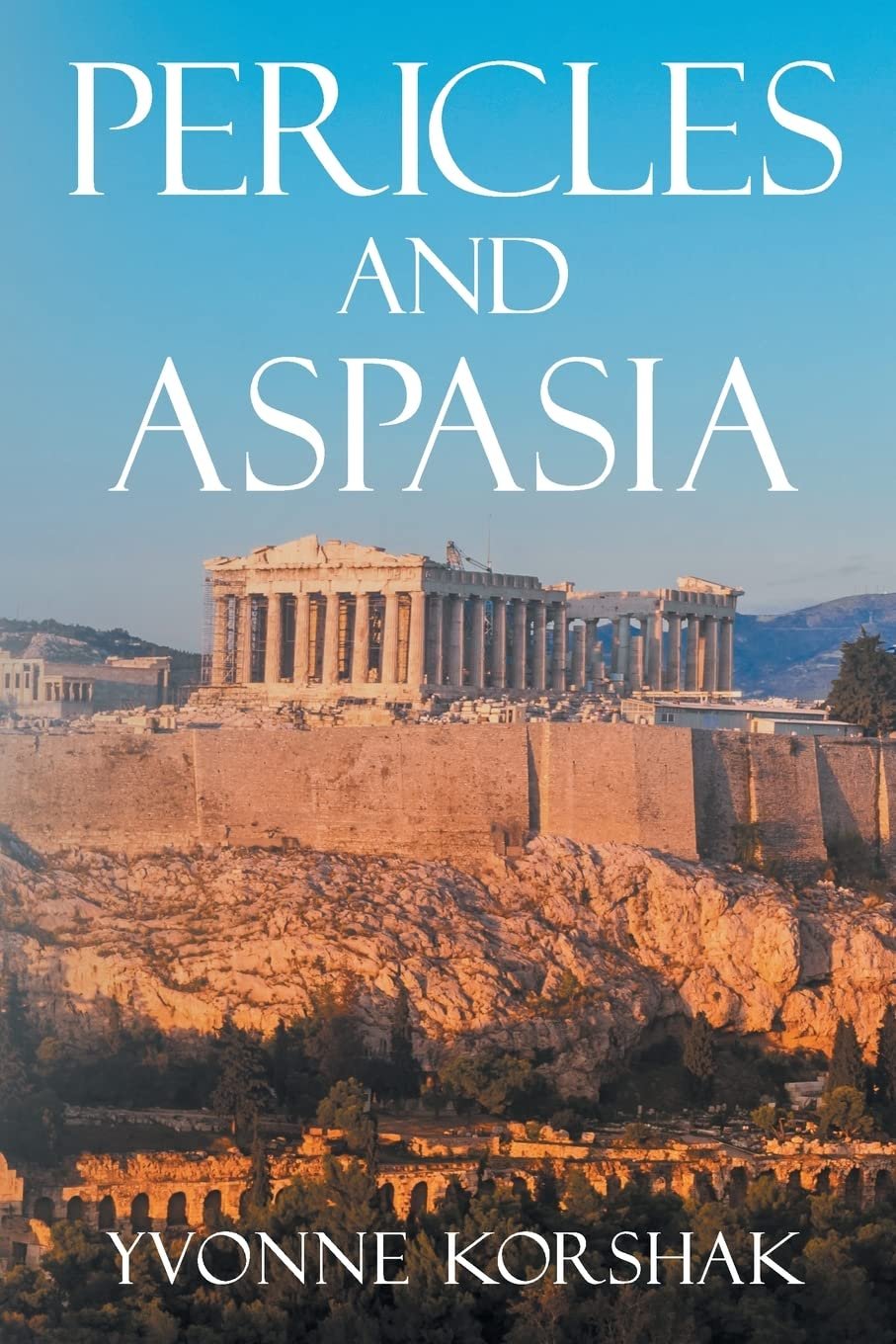Acropolis history is difficult to pin down in its early years, as it disappears into myth and legend. Originally an acropolis was an easily defensible position and was usually the home of the local king or ruler. Although not as important as the centres of Mycenae and Tiryns during the 2C BC, Athens became more important as they lost their influence.
The word ‘acropolis’ means ‘high city’ or ‘upper part of the city’. Many ancient Greek cities had them, so there is an acropolis at Lindos in Rhodes, for example. But the term has become almost exclusively associated with Athens, so when people say ‘the acropolis’, you can be sure they are referring to the one at Athens.
The rise of Athens
Theseas is credited with unifying the surrounding areas of Attica with Athens to form a single state. After that Athens became more and more powerful. Acropolis history shows that the site changed from a political and military centre to a cult site. This is why the various temples were built on it.
Historians think that when the Mycenaean centres lost their power and anarchy prevailed, Athens escaped the disruptions. Later, power was shared amongst the wealthy land owners. They didn’t want a monarchy started again, so they moved away from the acropolis and this led to the development of the agora, which became the centre of civic life.

Building the monuments
From the 7C BC stone monuments began to be built all over Greece. A temple to Athena was built on the acropolis. Visit the new Acropolis Museum, and you can see one of the sculptures from this early temple.
In the 6C BC marble statues began to appear, and again you can see one of these in the Museum. It is known as the “Moschophoros” or “Calf-bearer”.
Other small buildings were added, and the temple of Athena was rebuilt. Marble was now being used on a regular basis for parts of the building. More statues were made to be displayed on the acropolis, the majority of them being of maidens, or “kores”.
Here is a video recreation of Athens prior to the Persian sacking about 480 BC.
Acropolis history and the coming of the Persians
More building work went on, and it was decided to build a much bigger temple next to the old one. It was to be dedicated to Pallas Athena, “Athena the Maiden”. But it wasn’t finished. The Persians had watched the growth of Athens and other Greek states, and decided they were getting too powerful. So they invaded, captured Athens and completely destroyed the acropolis.
Two years later the Greeks defeated the Persians, which included the famous battle of Salamis, where the Persian fleet was outmaneuvered by the Greeks. When the Athenians returned to their city, all they found were mounds of charred ruins on the acropolis.
A new era
The master-mind of Salamis, Themistocles, together with other politicians, started work on repairs. But their main concern was still the Persians, who could return at any time. So they concentrated on fortifying the city and its acropolis.
They also formed the Delian League, an alliance of Greek city states, whose function was to organise a defense against any further Persian aggression. Later, there was a lot of disagreement over the league, because under their leader Pericles, the Athenians used some of the tribute money to fund the buildings on the acropolis.

Acropolis history in the Pericles era
It was during the time of Pericles (about 450 BC) that many of the monuments on the acropolis were rebuilt, including the Parthenon. This was the golden age of creativity in Athens. But it was interrupted in 431 BC by Athens’ war with Sparta, known as the Peloponnesian War. Athens lost (Pericles himself died during a plague which struck Athens), but then in 415 BC work commenced on the temple of Athena Nike. After another humiliating defeat by Sicily they completed the Erechtheion.

Two lovers crest the wave of the golden age of Athens: Pericles, statesman and general, and Aspasia, his courtesan, a philosopher’s daughter and a brilliant woman in her own right. In a world of hierarchies, he is at the top when she arrives as little more than flotsam cast up on Athenian shores. Their love transcends social sanctions, enduring and deepening despite the grave threat it presents to Pericles’ reputation as a leader of the Athenian democracy. More
To the present day
After that the acropolis changed very little. The romans, especially Hadrian, made repairs to damaged buildings and added one or two monuments. Claudius built the massive steps in front of the entrance, or Propylaea.
Then in 529 AD the emperor Justinian closed the philosophical schools and that led to the demise of Athens. Later, Slavs and Saracens invaded and Athens was almost forgotten.
After the Turks took over Greece the Erechtheion was turned into a harem for the Turkish commander, and part of the Propylaea was blown up by either a lightning strike or an exploding shell.
The Venetians besieged Athens in the 17C. The Turks kept their explosives in the Parthenon, and a Venetian shell ignited it, destroying most of the structure. It’s a sad reflection on humanity that it wasn’t an earthquake or natural disaster which caused so much devastation to one of the greatest monuments of the ancient world. Acropolis history would then have been illustrated by intact ancient buildings, perhaps leaving us with an even greater appreciation of the abilities of its creators.